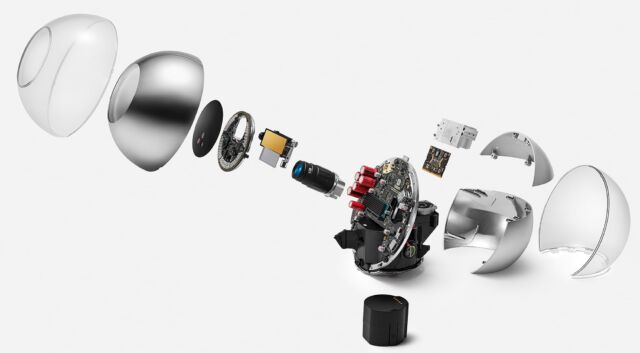
reader comments
70 with
A company co-founded by OpenAI CEO Sam Altman has raised $115 million for Worldcoin, a crypto coin project that scans users’ eyeballs in order “to establish an individual’s unique personhood.” In addition to leading the maker of ChatGPT and GPT-4, Altman is co-founder and chairman of Tools for Humanity, a company that builds technology for the Worldcoin project.
Tools for Humanity today announced $115 million in Series C funding from Blockchain Capital, Andreessen Horowitz’s crypto fund, Bain Capital Crypto, and Distributed Global. Blockchain Capital said that Worldcoin’s “World ID” system that involves eyeball-scanning will make it easier for applications to distinguish between bots and humans.

“Worldcoin strives to become the world’s largest and most inclusive identity and financial network, built around World ID and the Worldcoin token—a public utility that will be owned by everyone regardless of their background or economic status,” the crypto firm’s funding press release said.
Worldcoin offers a World app for iOS and Android, which “allows a person to set up their Worldcoin account and access a digital wallet connected to Worldcoin, Bitcoin, Ethereum and other digital and traditional currencies including stablecoins,” the company says.
The eyeball-scanning part comes into play for anyone who signs up for a World ID. This requires going to a physical location and using your eyes and a device called an “Orb” to verify that you’re a real person.
“The Orb uses iris biometrics to establish an individual’s unique personhood, then creates a digital World ID that can be used pseudonymously in a wide variety of everyday applications without revealing the user’s identity,” Worldcoin says.
Orb availability is limited
The World app itself can be used without signing up for a World ID, the company says. But Worldcoin says that people who get a World ID will also receive some free Worldcoin tokens and some amount of free bitcoin and ether currency.
project FAQ says. A US resident can obtain a World ID, but the World app tells users that there are no Orbs in the United States yet.
“We’re working hard to bring Orbs to every country in the World,” the app says if you’re located in one of those unfortunate Orb-less countries.
Even though Worldcoin says its tokens aren’t intended to be available to people in the US, the Orb hardware will be on display in a few US cities in the coming months. The company announced an Orb “tour” in which “Worldcoin Orbs will be available for a limited time” from May through July in Berlin, Dubai, London, Mexico City, Miami, New York City, San Francisco, Seoul, and Tokyo.
Investor: Worldcoin is not a “dystopian nightmare”
In a press release, Tools for Humanity said the new funding “will accelerate TFH’s continued R&D and growth, enabling it to support the expansion of the Worldcoin project and to further develop World App, the first wallet for the Worldcoin ecosystem.”
Blockchain Capital General Partner Spencer Bogart defended Worldcoin against the privacy and security criticisms the iris-scanning project has received. “I thought Worldcoin was some dystopian Orwellian nightmare, then our team invested hundreds of hours evaluating what the project’s contributors have actually built and I completely changed my mind,” Bogart wrote on Twitter.
Bogart claimed that “Worldcoin is quite likely the single most misunderstood project in all of crypto,” noting that upon “first glance, it appears to be a noxious combination of hardware, biometrics, crypto and AI.”
But “in reality,” according to Bogart, “Worldcoin’s World ID is the most compelling solution we’ve seen” to a decades-old problem. “In short, Worldcoin has a unique opportunity to establish and scale a new privacy-preserving primitive for the Internet (World ID) that enables any application to easily distinguish between machines (bots) and humans.”
Blockchain Capital said on its website that “World ID empowers individuals to verify their humanness online while maintaining anonymity through zero-knowledge proofs. Verification is as simple as clicking a button to sign a transaction.”






